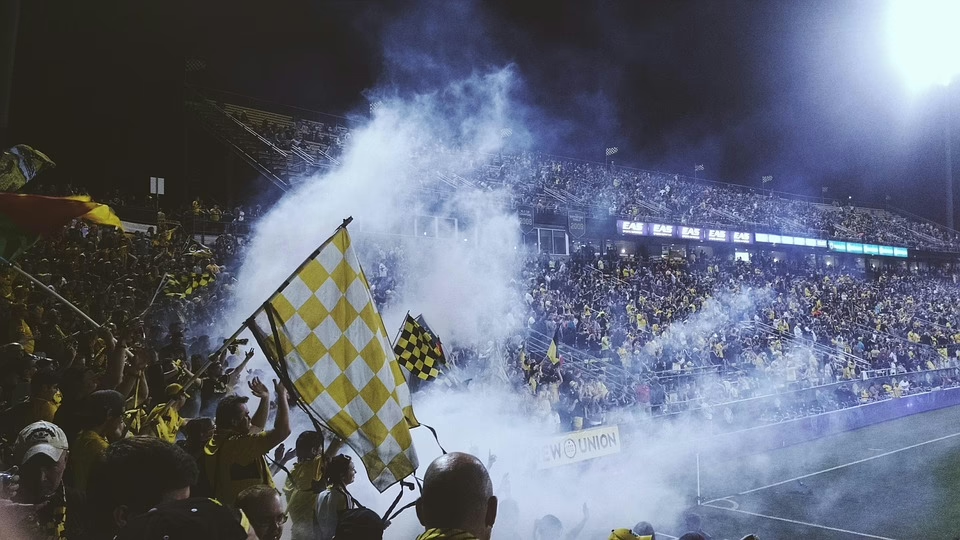Fan Culture: The Heartbeat of Soccer Across Continents
Soccer, known as football outside North America, stands as the world’s most popular sport. Its global reach and cultural significance are profoundly intertwined with the passionate communities of fans that breathe life into the game. This article delves into the multi-faceted nature of fan culture, illustrating how it varies yet unites supporters across continents, creating a heartbeat that resonates far beyond the 90 minutes of play.
1. The Essence of Fan Culture
At its core, fan culture is about identity, belonging, and passion. For many, supporting a soccer team goes beyond mere interest; it becomes an integral part of their identity. Fans often form emotional bonds with their teams, celebrating victories and mourning losses collectively. This culture manifests in various ways, from chants and songs to elaborate displays and rituals at matches.
1.1 The Birth of a Fan
Fan culture often begins in childhood, influenced by family, friends, and local communities. Children grow up idolizing players or clubs, attending matches, and becoming immersed in the rituals of support. This early exposure instills a sense of pride and loyalty that can last a lifetime.
[1] The Psychological Aspect of Supporting a Team
Studies have shown that supporting a sports team can provide psychological benefits, including stress relief and a sense of community. The camaraderie felt with fellow fans during matches fosters social connections that are vital to human interaction. The emotional rollercoaster of good and bad results becomes a communal experience, forging deeper bonds with one another.
2. Global Perspectives on Fan Culture
Fan culture varies significantly across regions, influenced by historical, social, and cultural contexts. While the passion remains universal, the expressions of it can be strikingly different.
2.1 Europe: The Passionate Heartlands
European soccer boasts some of the most intense fan cultures globally, marked by deep-rooted historical rivalries and passionate support. Clubs like FC Barcelona, Manchester United, and Borussia Dortmund have fierce followers who create an electric atmosphere in stadiums.
2.1.1 The Ultras Phenomenon
In many European countries, particularly Italy and France, organized supporter groups known as “Ultras” play a pivotal role in fan culture. These groups are characterized by their passionate support, vibrant displays, and often controversial behavior. They are known for:
- Choreographed Displays: Large-scale banners and flares during matches create an impressive visual spectacle.
- Chants and Songs: Unique songs that capture the spirit of the club and its history, often passed down through generations.
Despite their sometimes negative reputation concerning violence or disruptive behavior, Ultras are essential in creating an electrifying atmosphere in stadiums.
2.2 South America: The Soul of the Game
In South America, soccer is not just a sport; it’s a way of life. The continent’s fan culture is deeply emotional and tied to national pride. Rivals like Boca Juniors and River Plate in Argentina exemplify this intensity.
2.2.1 The Boca-River Rivalry
The Superclásico, contested between Boca Juniors and River Plate, is one of the most heated rivalries in sports. Matches are characterized by:
- Incredible Chants: Boca fans, known as “La 12,” create an atmosphere that can drive their team to victory.
- Street Culture: The fervor extends beyond the stadium, with fans organizing pre-match festivities and celebrating in the streets.
The passion is palpable, underscoring how soccer games become spectacles that transcend sport.
2.3 North America: Emerging Enthusiasm
In the United States and Canada, soccer has traditionally played second fiddle to sports like American football and basketball. However, the rise of Major League Soccer (MLS) has seen a burgeoning fan culture that presents its unique characteristics.
2.3.1 The Growth of MLS
With teams like LAFC and Atlanta United, MLS has cultivated a vibrant fan base. Interestingly, many MLS supporters have backgrounds in other soccer cultures and bring diverse traditions and practices. Key aspects include:
- Family-Friendly Atmospheres: Matches often cater to families, with various activities and entertainment.
- Cultural Diversity: Fans represent a mosaic of cultures, reflecting the immigrant communities that have embraced soccer as a unifying force.
These elements contribute to a growing soccer culture where local pride intersects with global traditions.
2.4 Africa: Unity Through The Beautiful Game
In Africa, soccer is interwoven with national identity and pride. The African Cup of Nations and local leagues provide a platform for fans to rally behind their teams.
2.4.1 Fan Engagement
Fans engage through:
- Community Initiatives: Many clubs work closely with local communities to foster a sense of belonging.
- Celebrations and Rituals: Pre-game rituals often involve music, dance, and pageantry.
These elements showcase how soccer can unify a continent that faces various socio-economic challenges.
2.5 Asia: A Diverse Soccer Landscape
Fan culture in Asia varies significantly from country to country, reflecting each nation’s unique history. In countries like Japan and South Korea, soccer is deeply ingrained in the social fabric.
2.5.1 The J-League’s Unique Approach
Japan’s J-League has fostered a unique fan culture characterized by:
- Community Involvement: Clubs often engage with local schools and businesses to build a loyal following.
- Fair Play and Respect: Fans emphasize respectful behavior, creating a more harmonious matchday experience.
This contrasts with passionate rivalries seen in other contexts, showcasing the diversity of soccer fandom.
3. The Digital Age of Fan Culture
The emergence of digital technology has transformed fan culture dramatically. Social media platforms, apps, and online communities have revolutionized how fans interact, share experiences, and mobilize support.
3.1 Social Media and Fan Interaction
Platforms like Twitter, Instagram, and TikTok have given rise to new expressions of fandom:
- Real-Time Engagement: Fans can share opinions instantly, engaging in discussions with supporters worldwide.
- Content Creation: Fan-generated content, including memes and vlogs, contributes to a rich digital culture.
This has democratized sports fandom, allowing voices from different corners of the world to resonate and create connections.
3.2 Online Communities
Various online platforms cater to niche fan bases, enabling discussions that transcend geographical boundaries:
- Forums and Reddit: Dedicated discussions about strategies, match analyses, and player performances foster deeper engagement.
- Fantasy Leagues: Fans can participate more interactively, competing against friends and fellow fans to bolster their connection to the sport.
Digital platforms have redefined what it means to be a fan in the 21st century, opening avenues for engagement that were previously unimaginable.
4. The Role of Merchandise in Fan Culture
Merchandise is integral to fan culture, serving as a tangible connection between teams and their supporters. From jerseys to scarves, the ways fans express their allegiance are diverse.
4.1 Brand Identity
Clubs heavily invest in branding, recognizing that merchandise is not just a revenue stream; it’s a means of connecting with fans. Popular items reflect the club’s history and ethos:
- Authentic Jerseys: Fans are often willing to invest in authentic gear, seeing it as a symbol of their loyalty.
- Limited Editions: Exclusive merchandise that celebrates milestones often drives fan engagement and investment.
Fans wear their merchandise proudly, serving as walking billboards for their teams.
4.2 The Emotional Connection
Merchandise connects fans on an emotional level. Wearing a team’s colors cultivates pride and signifies belonging. For many, buying gear represents:
- Commitment: Purchasing merchandise offers fans a way to prove their loyalty.
- Community: Sporting colors creates a sense of unity among fans, fostering a shared identity.
This emotional connection enhances the overall experience of being a fan.
5. Challenges and Evolution of Fan Culture
While fan culture is vibrant and engaging, it faces challenges in the modern age. Issues of racial discrimination, commercialism, and violence present significant hurdles.
5.1 Racism and Discrimination
Incidents of racism and discrimination have marred the culture in various regions. Clubs and governing bodies are increasingly aware of the need to combat these issues through:
- Awareness Campaigns: Initiatives are rolled out to educate fans on the importance of inclusivity.
- Stricter Policies: Clubs have begun implementing policies against hate speech and discriminatory behavior.
Addressing these concerns is vital to ensure an inclusive and welcoming environment for all supporters.
5.2 Commercialization of Soccer
The commercialization of soccer has changed how clubs interact with fans, focusing more on revenue and less on community:
- Ticket Prices: Rising prices often alienate loyal fans who can no longer afford to attend matches.
- Exclusive Content: While digital platforms offer content, paywalls can restrict access to fans, impacting engagement.
Balancing commercial interests with fan engagement remains an ongoing challenge for many clubs.
5.3 The Future of Fan Culture
As soccer continues to evolve, so too will fan culture. The intersection of technology, social movements, and the emphasis on community engagement will shape the future:
- Virtual Reality Experiences: Immersive experiences may provide new ways for fans to connect with their teams.
- Social Activism: Fans are increasingly using their platforms to advocate for social change, tying their support for clubs to broader societal messages.
The evolution of fan culture is a testament to the passion and resilience of soccer fans worldwide.
Conclusion: The Heartbeat of Soccer
Fan culture is indeed the heartbeat of soccer across continents, pulsating with energy, enthusiasm, and emotion. It is a rich tapestry woven from the threads of identity, community, and shared passion. As we look to the future, fans will continue to play a pivotal role in shaping the sport’s culture, proving that their love for the game is as enduring as the sport itself.
The passion of fans not only enhances the spectacle of soccer but also reinforces its position as a globally unifying force, transcending barriers and connecting people from all walks of life. Soccer is more than just a game; it is a language spoken across continents, with fans as its most ardent and vital advocates.
In every corner of the globe, the heartbeat of soccer resonates, echoing the cheers and chants of dedicated fans who demonstrate time and again that, at its core, soccer is a beautiful game meant to be enjoyed together.


























Add Comment